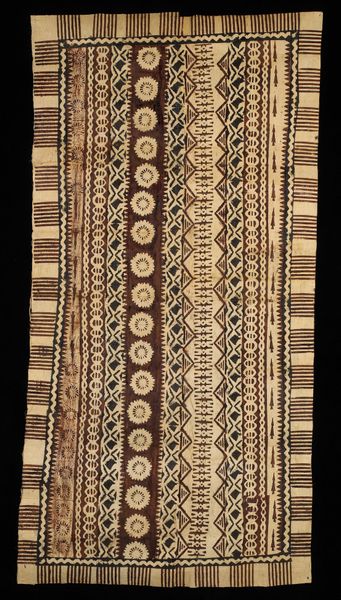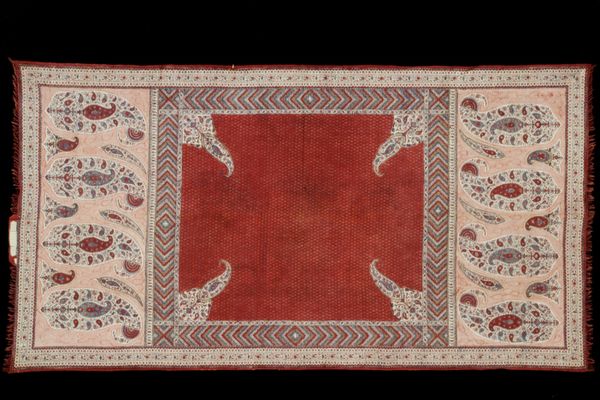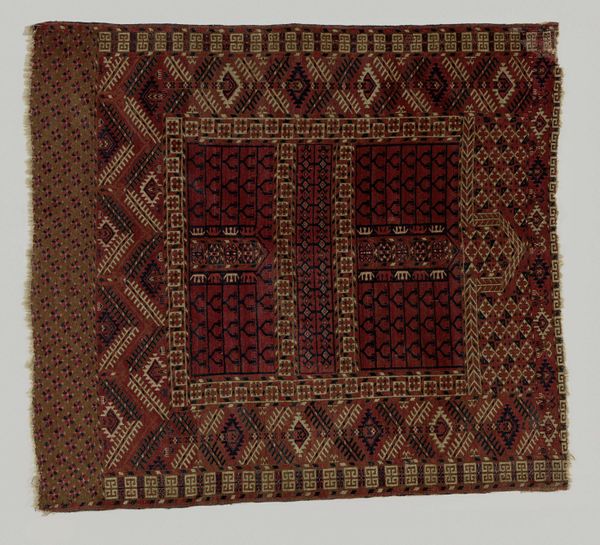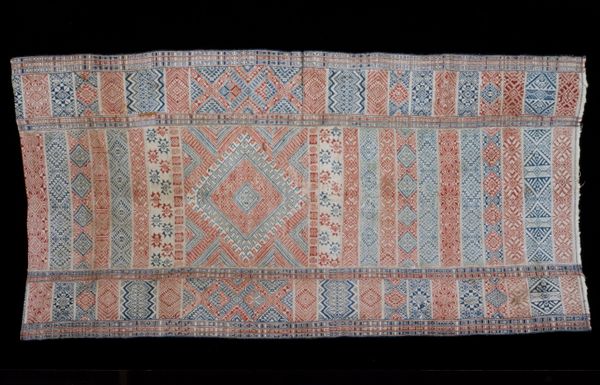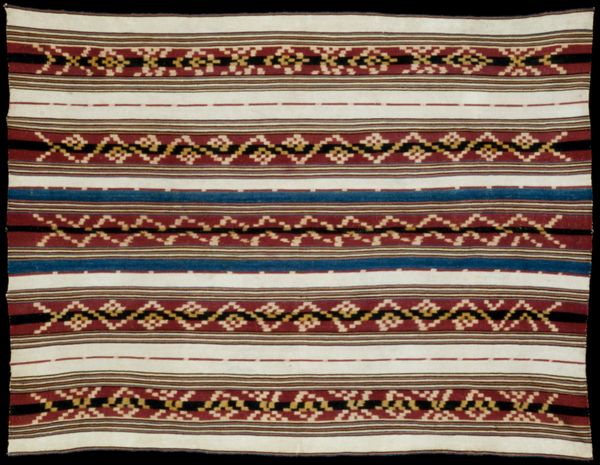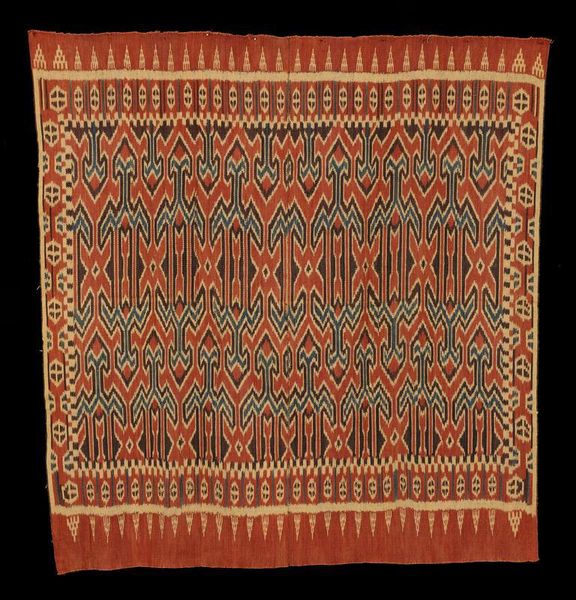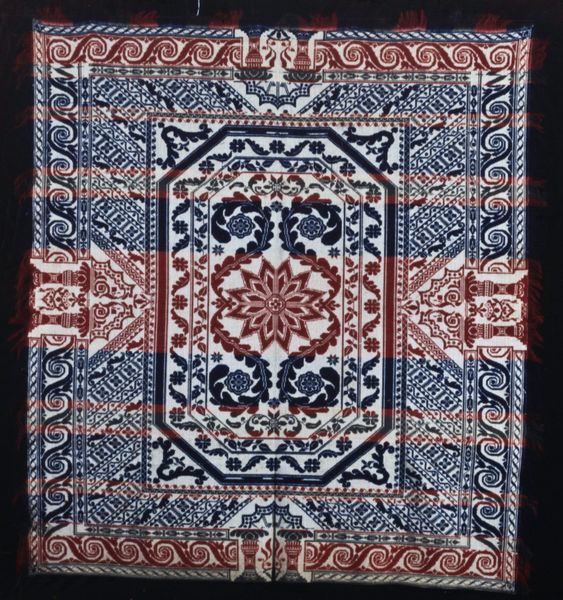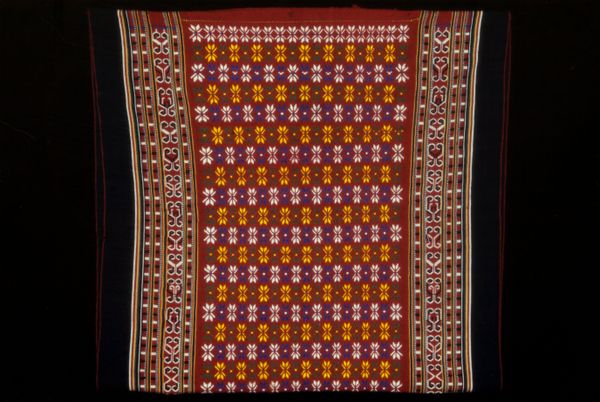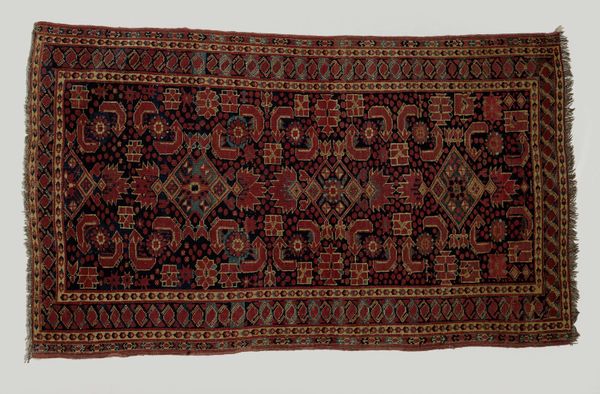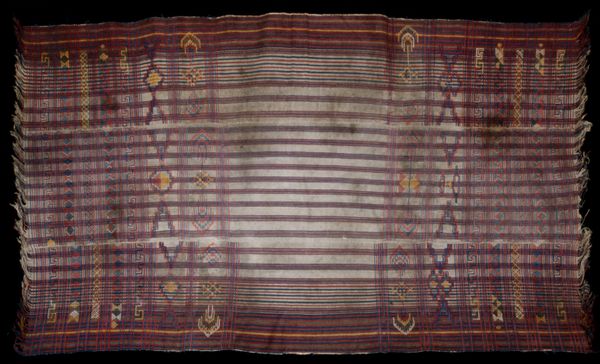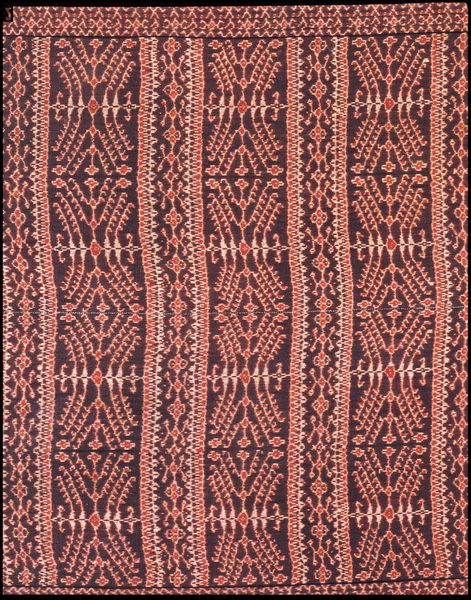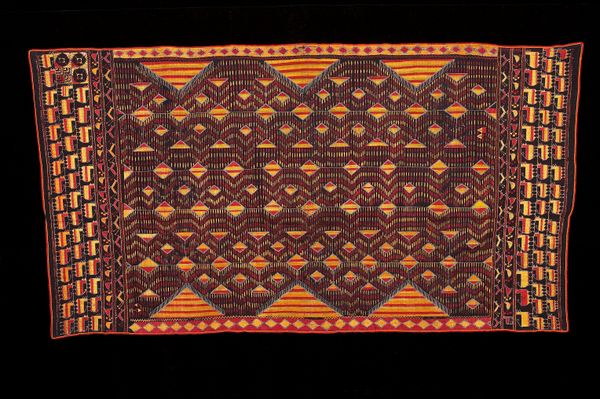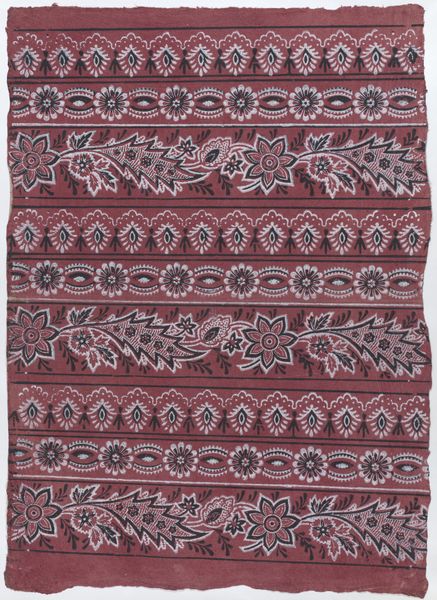
fibre-art, weaving, textile
#
pattern heavy
#
natural stone pattern
#
fibre-art
#
weaving
#
textile
#
geometric pattern
#
repetitive shape and pattern
#
geometric
#
repetition of pattern
#
regular pattern
#
pattern repetition
#
textile design
#
layered pattern
#
combined pattern
Dimensions: 104 x 29 3/4 in. (264.16 x 75.6 cm)
Copyright: Public Domain
Editor: This is a 'Chagsi pangkheb' textile, probably made around the 20th century. The museum tells us it’s crafted from cotton and silk. Looking at all these carefully woven geometric shapes, it’s really stunning. How should we approach understanding this piece? Curator: Let's begin by acknowledging the labor inherent in the process. Consider the selection, preparation, and dying of the cotton and silk. This piece exists because of skilled labor—who produced it and under what conditions? Were the materials locally sourced or part of a larger trade network? Editor: That’s a good point. You see the textile first as the product of labor. I’m curious, what is this ‘Chagsi pangkheb’ intended use? Curator: Function informs production. Was it for personal use, perhaps a ritual garment signifying status, or was it destined for trade or tribute? The quality of the materials and the intricacy of the weave speak to potential social hierarchies and economic systems at play. Editor: It’s fascinating how thinking about the physical creation and use changes my perception of the design. I initially saw just geometric beauty. Curator: Exactly. These weren't just design choices in a vacuum. The repeated motifs – where did they come from? Are these patterns unique to this region, or are they a combination of cultural influences made available by trade routes? What does the maker borrow, transform, and reimagine with the raw material and means available to them? Editor: Thinking about those global exchanges...it highlights how this textile connects to a bigger story. I now see it more than just beautiful weaving—it represents production and place. Thanks, this new perspective has broadened my understanding. Curator: Absolutely. It’s in considering the material conditions of its making that the full story of this 'Chagsi pangkheb' unfolds.
Comments
No comments
Be the first to comment and join the conversation on the ultimate creative platform.
